WALKING NOVEMBER
Beginning in all.
Not one short cut
to get to my bus.
ENFRENTE DE
LA COSECHA DEL MAIZ EN EL PATIO
Y ANDANDO
CON RAFAEL EN LA TIERRA NATAL
Camote del
cerro, Jim
Comida de
las indigenas.
Silvestre.
Baja la
tierra.
Raices.
El sol.
La cubija
de los pobres.
A la presa
del rincón—
Chiquipo—semillas
blancas.
Dulce—y
pegamento en sus labios.
Palo Blanco—lo
mismo arbol
que veemos
en el cerro de la Virgen de Guadalupe
en
Pajacuarán.
Rafael con
su guadaña.
Campamocha.
Campomocha
es pariente de chapulín
que es
pariente de los grillos.
Harnica
para té.
Jugo
verde—nopal, apio, piña y naranja.
Sorgo y maiz
de comer.
Sorgo es
para los animales.
Frijojilla—Morning
glory.
Maíz, o
milpa, sí, lo mismo.
Esta es una
planta se llamada Santa María.
Pericos.
Arbol de
Casahuate o Palobobo—a las abejas les gustan.
Pajaros
volando—Son garzas
Tomates
Silvestre.
Esta planta
parece como una escoba.
Hago
escobas de esta para las mujeres.
Reatemilla—petalos
amarillos y hojas verde—
medicina
para el susto.
Barba del
Viejo—cortamos en navidad
para hacer
barbas para la pasión,
para
adornar el hijo de Dios.
Arbol de limones.
Tunas de
Nopal—dulce—cuidado.
Pican.
Dejame frotarles con esta planta.
Maíz del
coyote—tan duro. Peor.
Arboles de
Guamuchel
Regrasamos
al rancho con una mariposa
en mi
hombro—para buena suerte.
EL CHARRO
SALVADOR NAVARRO NAVARRO
CAMINANDO
CON JIM BODEEN
Don
Salvador sees the locura en mi.
He knows there’s something
crazy he likes. I see time the rancho’s
forgotten—and can’t leave it alone.
We duck out together tonight.
He wants to get me on that damn burra.
He wants to take me into the milpa.
First to his place, locked up tight.
Don Salvador’s got a lock in each room
of his rukita. Chickens run free. Four locks.
He puts me in a chair while he gets ready.
Tonio is his Sancho Panza. I wasn’t too sure
about Tonio, but I catch on. He takes orders
but he also takes care. Don Salvador
comes back into the room, sidles up
to me. We give each other the eye.
I’m thinking of nothing but his poems.
Qué
travieso, este cantante haciendo corridos.
He looks at me again. He looks at his side.
He’s got a pistol stuck in his pants.
No,
Salvador. Dé mi lo. Give it to me.
La pistola
no va. Ponelo en su cuarto.
He begs me
like a child. He was going
to show me the ropes. I won’t go,
Don Salvador, I say. OK, OK.
He shouts something to Tonio.
He takes me through the cercana,
behind the gate. He keeps his saddle
in an old blue Ford LTD that hasn’t
been on the road in years. No lights,
tires on their axles, but this:
Popeye painted on one side of the trunk,
Navarro painted on the other side.
Popeye Navarro I think. Looking closer,
Popeye’s by himself, the vato Navarro’s
painted in black stocking cap, white pants,
open crotch, three bronzed beauties
surrounding and making promises.
Who do you think is on the hood?
None other. Jesus himself, life-size
in the cosmos, surrounded by planets.
I’m still disoriented by the pistol.
I’ve never held a loaded .45.
I held one tonight, and taking it
away from him, I felt like the child.
Sube a la
burra, don Salvador says.
You get up on the burra, I say.
I’ll walk with you in the corn.
Walking with don Salvador
in the streets of La Cuestita
fills me up. It’s like being
with my mother at baseball games.
Hey,
portero, don Salvador cries.
Hey,
portero. A la derecha,
Aquí es el
rumbo al norte.
Aquí es el
Camino Real.
Aquí es el
camino de tres presas.
The road to three dams.
Don Salvador knows I have the camcorder,
and he knows I can’t say no to poems.
He sings. I say, Pare. Stop.
Get the camera ready. OK, Sing.
And he sings. He has gritos.
He’ll talk the poem,
and he’ll swing into memory.
Don Salvador sings. He never repeats himself.
He’s the collected memory of the village.
I am encantado. I know what enchantment
feels like. Salvador
knows how to finish
a poem. He dicho, he says, pronouncing
the end of tyranny and the beginning
of justice. He does it all with rhymes
learned in the rural school of Lázaro Cárdenas
He dicho. I have said it. I have spoken.
Yes, you have. Don Salvador takes us
into the milpa. He gets me up on that burra.
Tonio is with us all the time. I am a witness.
Don Salvador sends Tonio into the surcos
to get some green corn for eating. This is
the Rumbo a Las Maravillas.
WHY I LISTEN TO SALVADOR
NAVARRO NAVARRO
—¿La Cuesta
Vieja? ¿Estuve las cumbres
también. Ya
me vine pa’ aca’. Salvador
is excited hearing Rafael walked me
to the first place, the place that gave
its name to La Cuestita before everyone
packed up and moved. These were hard
times, before lights, before Lázaro Cárdenas.
—Lazaro
Cárdenas was born in Las Avila—
un rancho.—
He came from us.
—Por él,
tenemos una pedacita de tierra.
Because of him we have
a little piece of land.
Walking in La Cuestita with Salvador ,
he points to a house. —Esta casita.—
Aquí abré
mis ojos. Aquí nací yo.—
November
16, 2004
LIVING CLOSE
on the rancho means
finding new ways to stay quiet
to make it through the night.
When the men don’t come home
women hold their breath
in new ways. Food sits.
Living close
means there isn’t much
one can do.
That feeling was here tonight
with the women. It started early.
Before dinner things began
to change. At some point
I went to be with them
in the patio. Maybe
I could be some form
of diversion. No. Uh-uh.
WHY
The cacique owned the land.
The cacique owned the rancho.
Everybody worked for the cacique.
All work was forced labor.
This is the way it was.
There are stronger words for this.
Say them to yourself.
Put them in your mouth.
You know what they are.
Lázaro Cárdenas changed all that.
He broke up the haciendas.
He gave parcels of land
to the people of the ranchos.
He did more than that.
He did this in our time.
This is why the people
of the ranchos love him.
Even today, los ancianos.
They call him Tata.
¡AY,
PAPACITO!—LOS GRITOS DE LA GENTE
Fear that keeps me from knocking makes me stranger.
Easier to photograph a door than to knock on one.
My need for the music brings me.
Vengate.
Venga, Rosa Maciel Navarro says.
Jesús Padilla Piñones on his side on a bench
by the door gets up and grabs his cane.
¿De donde
viene esta musica?
They laugh. and walk me into their bedroom
where the phonograph sits.
This is the record
player
that pumps music into
the rancho
from that speaker in
the tree.
They’ve been waiting for me to knock.
(Everyone is waiting for me to knock.)
Jesús, 79, sits on his bed, Sientate, Sientate.
My eyes on the box holding the records.
¿Puedo
verlos? !Cómo no!
Las
Hermanas Jilguerillas, Las Hermanas Huertas.
The worn covers, images of singers in time—
worn from shuffling and listening.
Tortillas tumble in the cosmos.
Lindos Ojitos—Beautiful little eyes,
Cuatro
cartas, Los Amores de Rosiata,
A mi me
toco perder, Contraband por el Aire,
Los Alegres
de Teran. Benito Canales.
Album covers held by masking tape.
Unraveling from 20 years ago.
Stereo speakers from California
or Vietnam
send scratches and corridos into the universe
from old records in this old man’s bedroom,
pleasuring the world. Llegan los federales,
una mujer Tapatilla. Lord, there is always more,
let me be your receiver—always more,
than I listen to. Living inside the song
one doesn’t ask where the music is coming from.
Calla
mujer, calla. deja de tanto llorar
El ultimo
trago. Toma esta botella conmigo
El ultimo
trago tomamos
a llorar
por lo mismos errores.
Knock on the stranger’s door,
Home is on the other side.
What is missing is news of their children.
Tap your feet. Ask questions.
Everything will be answered.
November 19-December
10, 2004
Salvador Navarro Navarro Poeta de la Cuestita
Parte Uno
Salvador Navarro Navarro,
Poeta y Biblioteca del Rancho
de La Cuestita
LINES FROM LA CUESTITA
Parte Uno
Salvador Navarro Navarro,
Poeta y Biblioteca del Rancho
de La Cuestita
LINES FROM LA CUESTITA
HONORING 36 YEARS OF MARRIAGE
“I’m ready for what the day brings.”
—Karen Bodeen
Nothing in my book of daily devotions
has ever been as good as this. A traveler
who doesn’t feel the loneliness of the people
he visits is only a tourist. Our time circles
through stories of so many,
sometimes it’s hard to see where we are.
Finding ourselves on a bus in Michoacán,
completing a circle we’ve been making
for more than 20 years and couldn’t see,
is thrilling. Being with you on a bus
is thrilling, too. The point that blinds?
We’re both a long ways from last Friday
(Has it only been a week?) when you gave
your gift of the photo album
to the Rancho of La Cuestita.
Each day their separation from family—
across political—not natural borders,
makes me yearn for something like home.
I’m not writing 5-minute poems,
but when I get scared, I think of what
you said last week,
I’m ready for what the
day brings.
I say this before I step out the door
into the patio. When I say it, harvesting corn
with Fernando and Ofelia, it’s kind
of a celebratory chant. I’ve been surprised
to find compassion for men lost in alcohol.
You’re a Saint because you have
a different way of being.
Walking in the hills with Rafael
he showed me how to chew leaves to numb
the pain in toothache. I chewed
these leaves in my mouth,
wanting something more.
Walking. Caminando.
Las andadas. I want you
with me on each one.
Love, Jim,
November 19, 2004
WHERE DOES THE MUSIC COME FROM?
Two black pigeons get up from the table
and fly away when I walk out on the patio.
I listen to soft sounds of doña Jesusita sweeping.
She does what the bass does.
An area of the patio has been blocked off for maíz.
Well-fed birds are given their fill.
Heavy wings flap against corn-filled bellies.
Coo and crow from the chickens.
Past time for honking burros.
Ranchera music is coming right into the patio.
Where is it coming
from?
Celia puts me on a ladder and says,
“Sube. Arriba.
Y da una grita.”
From the roof I think I see all of Michoacán.
On the other side of the cercana
I look down into Rosa ’s
patio.
She has raised a speaker onto a pole
20’feet high. Higher than the cercana
separating
the two houses.
Ramón Ayala
y Los Bravos del Norte
sing in our patio and empty into the rancho.
I pick what I can hold in my arms
standing on the roof of the house.
“Grita,” Celia urges from the bottom
of the ladder. “Cry like a Mexican.”
Rosa
laughs. Alegría. Alabaré.
November
19, 2004
WALKING IN THE FIELDS WITH RAFAEL PADILLA
This plant is called La Quemadura.
It’s a bad one. It can get in your eyes.
It burns whatever it touches.
Do you want to try a little?
Sí, un poco
iniciación.
Rafael rubs
some
on the back of my hand,
and smiles.
WE’LL ALL BE LESS
In the first two minutes someone found
a photo of Aurora, Salvador ’s
wife.
“Oh, she just died,” she said.
In the last two weeks.
Rob looked at me and we said it to each other.
“Each time an ancestor dies a library burns.”
Cada vez
que un anciano muere,
una biblioteca se quema.
I’m going back in the next month,
I say, making a promise
I can keep in this year,
if not in this season.
Antonio Padilla found two photos
of himself in Esperanza’s memory room.
We’d taken photos of Salvador
and Aurora
as newlyweds. Now Aurora
is gone.
We held both people in our hands.
I saw in La Cuestita. Now she’s dead.
Esperanza is 89. She still walks the fields—
para sembrar maiz. She still plants corn.
There’s more in her head that I want to know
from any other person. If she dies
before she gives us her stories,
we’ll all be less.
GALLETAS Y DULCES
Claudia and Antonio returned
last night. They’re unpacking now.
Bringing back candies and cookies
from Michoacán is part of the new culture.
one year away from her university degree
first in a generation of new teachers,
lo major de
los mejores,
hands me a foil-wrapped package
of Duvalín, tri sabor,
hazlenut, chocolate, & strawberry,
along with a plastic spoon
the size of a baby’s index finger.
The mucoso on the package,
peers out from behind
what looks like a great scoop
of Neopolitan ice cream.
He’s a vato with a shock
of orange hair, and a baseball cap
worn backwards like the gavachos.
he, indeed, appears to be.
Less than half an ounce
of colored frosting here.
Triny hands me a handful
of Duvalín’s.
“Here Mr. Bodeen.
This is my favorite candy.
When we were in Mexico
we were always too poor
have this. Do you like it?
Jim Bodeen
August 2, 2004
WHEN I WAS A LITTLE GIRL,
Esperanza says, mi abuelita
Esperanza, would bring me
into her room. I would sit
on her lap in this rocking chair,
and she would tell me
about all of the stories
in the pictures.
WHAT THE ABUELITAS WERE WAITING TO SHOW US
We were with the men
riding in backs of pickups
thinking we were cowboys,
real vaqueros. We were out
back, off trail for two days—
then they disappeared. Right
after we got back from Pajacuarán,
when we sat under the patio
and Celia fixed us that soup.
Rafael took his lime
and ran it over the table cloth
to chase away the flies.
Rob and I thought we had just
seen the wisdom of Mexican sages.
Then the men got up and left,
disappeared, and didn’t come back.
Things went flat. Women sat
in chairs and didn’t talk.
Wasn’t anything we could do.
The women, though, were waiting,
and watching, too. At the end
of the day, we thought we were done.
We were tired. That’s when
the grandmothers walked us
to Esperanza’s place. The oldest
person in the rancho took us
inside her room with the pictures.
More than 50 years of photographs
on her walls. The entire story
waiting to be told, waiting
for the telling, for the listening.
CLOSER
Oh, my God, I say,
looking at the photograph
of Doña Jesusita and Claudia,
foreheads touching—
Claudia’s one arm around
her grandmother, the other
on her shoulder. Doña Jesusita’s
rebozo says, I am the
voice
of the pueblo. Once
you cross
the border you’re different,
something happens. Claudia
crosses both ways, closer.
Her
grandmother on one side,
her mother on the other. She carries
her grandmother into each street
and classroom. Two are one,
green leaves, deep roots, tierra natal.
Putting the photo on the cover
of my notebook, I carry stories
connecting into a day that shines.
Jim Bodeen
July—December, 2004
RESTING
The front door of the house is brown,
and this same color makes a stripe
about two feet high across the bottom.
A man and a woman sit in front
of the house in lawn chairs.
It is morning. The woman is crocheting
something. Her yarn sits on the sidewalk
between the two of them. The wall
behind her—above the brown stripe—
is yellow. There is a stripe of yellow
about six inches wide down the side of the wall
on the side of the wall where the man sits.
But the wall on this side is pink.
Inside the door is a square of bricks
for a construction project
they’re working on. The blocks
make a gray square inside the brown door.
So much shape and color!
Rob says, “A picture of me is not me,
but those photos are me.”
The man wears light blue Levi’s,
a white t-shirt and the hat of a vaquero.
The woman is in a light pink jacket.
She has a purple barrette in her hair.
LA PLAZA EN
LA CUESTITA
hasn’t been built yet,
it’s all rock and broken cement
from anyone’s leftover
building project, along with
some garbage, too—
but you can see it, if you try.
It’s a rectangle projecting
itself into a field of maíz
right into the campos themselves.
A la
izquierda, to the left,
are the
hills, los cerros
donde viven
la gente
tantos
solitario en el mundo,
men and women who live
apart and solitary.
Right in front of us
are the fields of maíz and trigo,
wheat and corn in one year!—
Along with the other ranchos
that come under the municipality
of
Chavinda.—Soledad, Magallanes,
San Juan
Palmiera, La Esperanza,
Tepegue and La Cuestita.
Over the big hill to the left—
you can’t see it from here—
is La Cometa, where the manantial,
fresh water, springs from the rock.
From here women walk down the trail
each day with burros
to carry water. And beyond
Rafael’s field, and over that hill,
is Pajacuarán. You can’t see it,
and you have to go around
to get there. Imagine
sitting here now, in this plaza
on Saturday morning,
or better yet, casi todo el día
Domingo,
despúes de la Misa.
You will enter off the street,
and there will be bathrooms
below on both sides. The plaza
will use its own elevated place
to be a place apart—the kiosko
will be at the center. The plans
have been drawn up
by an architect in Chavinda.
I’m not sure when it will be completed—
but fíjate—you can see it now.
STEPPING THROUGH THE DOOR
AT SALVADOR
NAVARRO’S
When we step through that door
at Salvador Navarro’s, we go to work.
He heard us say our names,
and he’s been waiting.
Nos dió abrazos
y empezaba hablando. Every word
that comes from his mouth seared
in his memory. Stories children
in the street had long ago quit listening to.
and we let him speak. Rob
takes pictures while I ask questions.
We’re recording the voice.
Where were you born? When?
Where are your parents buried?
He tells what happened with the patrones
when he was a child. His 80-year-old body
tall, lean, and strong. Blue long sleeved
cotton shirt over a white t-shirt.
He holds up maíz in two hands,
black and white and yellow.
I no longer have to ask questions.
I try and steer and hang on.
Water running from the roof
is collected inside a barrel
inside his little ruka,—mi Rukita—
When Rob goes out to get
another camera, he loosens
the wire holding the burra
to the steps and she takes off.
Rob lets her go. The story’s
more important than a burro
running free in a rancho.
Chickens have free rein.
We can’t stay here, but this
is what we came for,
and Carlos Gil our taxi
is still outside an hour later.
Salvador Navarro is the great grand father
of the abrecaminos in Yakima ,
the man we hoped to meet in the rancho.
In the world of great gifts
there are no soft landings—
Salvador
carries the stories.
Soy
campesino, Salvador says.
He recites a poem about the Revolution
that he learned in La Escuela Rural—
Lázaro
Cárdenas came here to La Cuestita—
built these schools in ranchos all over México.
Voy a
dedicar esta para familia Padilla—
Vete a
planear—un momento.
He validates all poets—
and we walk through the streets
of La Cuestita singing.
I’m holding his hand.
Carlos Gil, our taxi, hasn’t left.
He’s part of the listening.
Rob photographs and the children
spill from their houses. Rob bows,
and shakes hands with each person
he sees.
—Este es mi carnal,
Jose
Navarro Navarro, dos veces Navarro,
reaches out and smiles behind
a pair of female designer glasses
that betray his blindness.
El Colima real de Colima,
lined up before him by the side
of the road. He’s turned them
into a choir and a classroom
and he’s directing in the middle
of the street. He’s the only one
singing, except when he’s finished,
and the kids call for another.
Antonio
Padilla Maciel, 17,
son of
Antonio Padilla Maciel,
both of Yakima ,
Washington
they left La Cuestita in 2001—
Tony now—(he’s staying a month
in La Cuestita with his sister,
Claudia Padilla Maciel).
Tony has found us and tells Rob
he has a bed for us. We’re staying
in their parent’s house.
Carlos Gil hasn’t left.
He won’t take a peso more
than the four hundred.
Walking back the way we came,
Esperanza Maciel Navarro, 89,
the oldest living person in La Cuestita,
walks to the wooden gate
dressed in a cotton dress
and a brown robozo.
She holds her hands together.
She is the great grand mother
of Julia Padilla Ceja, 17, of Yakima .
Julia is the daughter
of Antonio
Padilla Rodriguez
and Yolanda
Ceja de Padilla,
and Julia’s stories are among
the first that would not leave me alone.
We are stepping through the doorway
into the rukita of Salvador Navarro’s.
When Julia’s great grand mother,
Esperanza Maciel Navarro,
walks to the gate to meet us,
she has already been told
we’re coming, and there is enough light
to photograph her face.
I do not yet know that she is the storyteller.
I do know that her portrait is for others.
She does not give this face to Julia alone.
We are walking in a great parade
to the Casa Grande, with the Padillas,
and the Maciel’s and the Navarro’s,
a photographer and a poet,
where we will sit with the ancient ones
of this village, where we will continue
this conversation, where we will meet
three daughters who are also
keepers of stories, and we will sit
and listen. We will record, photograph,
and ask our questions when it is time.
We will sit before each other, astonished and amazed,
believing and not believing at the same time.
Salvador Navarro will sing again.
We will sit in silence, too.
We will try and sort this thing out.
We will eat the posole prepared for us.
CARLOS GIL’S TAXI
doesn’t have one single gauge
in the dashboard, only a crucifix
hanging from the mirror,
and no shocks, either,
but he’s got a quiet voice
given to him by angels.
This is a journey given to us
by the gods of poetry
and nostalgia. The man
who steers the boat
is a guide, not a chauffeur.
Carlos Gil gives us some facts.
Siembro dos
hectarias de maíz.
Chavinda
tiene casi 20,000 habitantes.
Las
Cuestita tiene entre dos o tres mil.
Trigo y
maíz en un año.
Lago Camecuaro. Driving in
to La Cuestita, I try this arrival
once more in my mind.
Salvador
Navarro, Rafael Padilla Maciel,
Juan Maciel
Sandoval—hermano
de Margarita, en Yakima —
these are the names we’ve given
Carlos. He stops and asks directions,
turns left up a road I think
no car should have to go.
We carry gifts of
memory and family.
—Aquí estamos—Gil says
pulling in front of Salvador Navarro’s,
burro tied out front, neighbors watching,
me thinking, That last
rock stopped us.
ARRIVING IN LA CUESTITA
Finally, you can’t get here
by bus, but the road is paved.
The road out, on the other hand—
the road
out—todo compuso
de piedras
y agua corriendo—
made and shaped by
rock and running water.
Take the bus from Guadalajara
to Zamora .
At Zamora
take the bus to Chavinda.
It costs 30 pesos
and runs every 15 minutes.
At Chavinda, el municipio,
ask someone in the plaza
who knows
familia Padilla,
Navarro, o
Maciel, for a ride.
La Cuestita es una posole.
La Cuestita is one family
and everyone’s connected
somehow. Posole, get it?
I came here by way
of the Padillas in Yakima ,
Washington
Antonio Padilla, father
of my students in Yakima
said,
—En Chavinda, pregunta para alguien
que conoce mi hermano,
Rafael Padilla Maciel.
There are as many Padillas
in Yakima
as there are in La Cuestita.
I came because their children
were so beautiful and smart.
I wanted to more about
where that came from.
La Cuestita is a far place.
It’s off the map.
But it’s not dying. No.
It’s growing. 2000 mil habitants.
Maybe more. It’s bittersweet.
Every family in Mexico
has a child somewhere
living in the United States .
La Cuestita’s no different.
But maybe to lose the one’s
they’ve lost, is to lose the heart
and soul. ¿Quién sabe?
Rob and I took a taxi
out of Chavinda for 40 pesos.
Four bucks American.
Carlos Gil Ramírez
drove us in. He said,
“My father is Gil.
My mother is Ramírez.”
Jim Bodeen





















































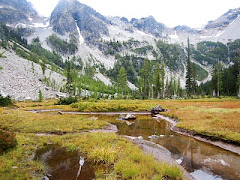


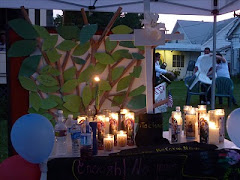






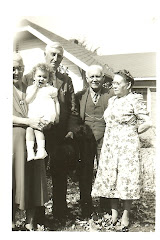
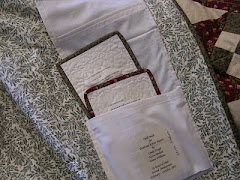








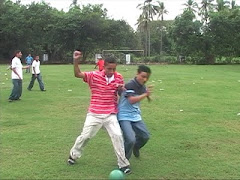
No comments:
Post a Comment